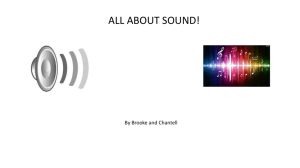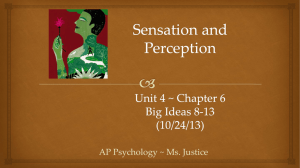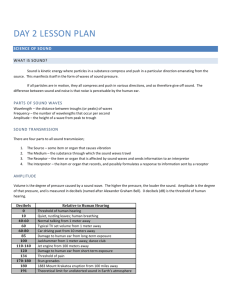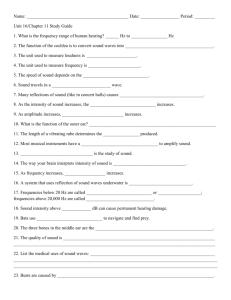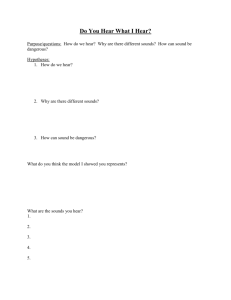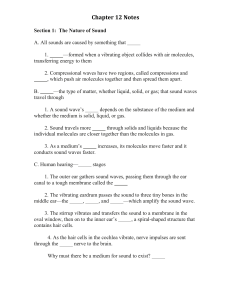hearing notes
advertisement
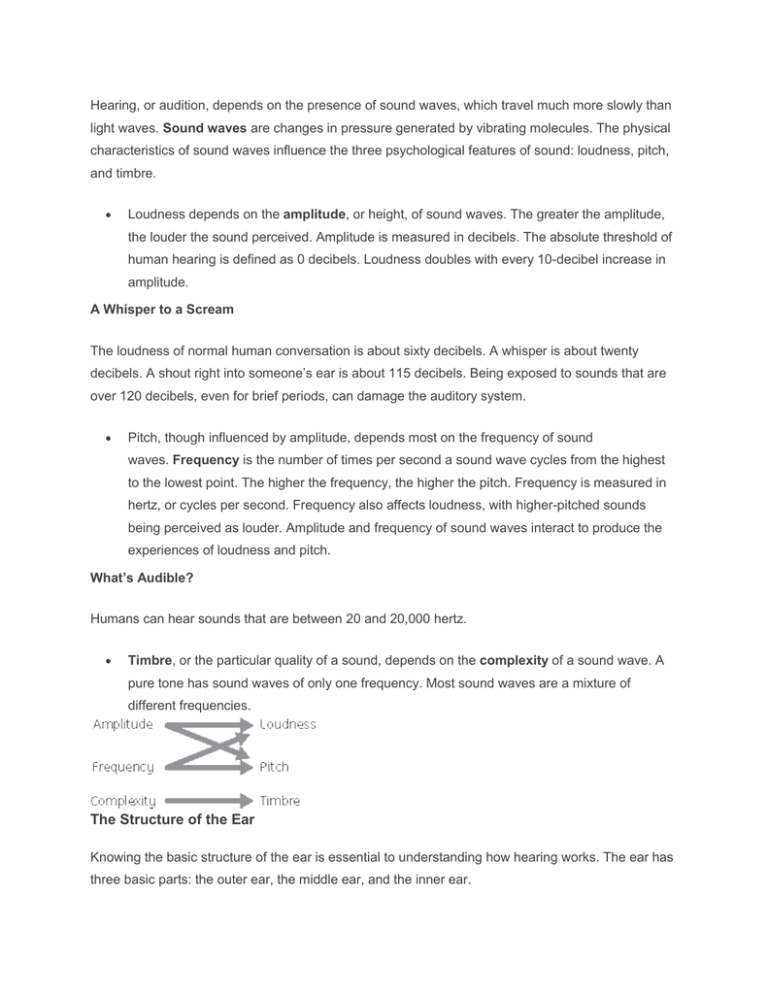
Hearing, or audition, depends on the presence of sound waves, which travel much more slowly than light waves. Sound waves are changes in pressure generated by vibrating molecules. The physical characteristics of sound waves influence the three psychological features of sound: loudness, pitch, and timbre. Loudness depends on the amplitude, or height, of sound waves. The greater the amplitude, the louder the sound perceived. Amplitude is measured in decibels. The absolute threshold of human hearing is defined as 0 decibels. Loudness doubles with every 10-decibel increase in amplitude. A Whisper to a Scream The loudness of normal human conversation is about sixty decibels. A whisper is about twenty decibels. A shout right into someone’s ear is about 115 decibels. Being exposed to sounds that are over 120 decibels, even for brief periods, can damage the auditory system. Pitch, though influenced by amplitude, depends most on the frequency of sound waves. Frequency is the number of times per second a sound wave cycles from the highest to the lowest point. The higher the frequency, the higher the pitch. Frequency is measured in hertz, or cycles per second. Frequency also affects loudness, with higher-pitched sounds being perceived as louder. Amplitude and frequency of sound waves interact to produce the experiences of loudness and pitch. What’s Audible? Humans can hear sounds that are between 20 and 20,000 hertz. Timbre, or the particular quality of a sound, depends on the complexity of a sound wave. A pure tone has sound waves of only one frequency. Most sound waves are a mixture of different frequencies. The Structure of the Ear Knowing the basic structure of the ear is essential to understanding how hearing works. The ear has three basic parts: the outer ear, the middle ear, and the inner ear. The visible part of the ear is the pinna, which collects sound waves and passes them along the auditory canal to a membrane called the eardrum. When sound waves hit the eardrum, it vibrates. The eardrum transmits the vibration to three bones, or ossicles, in the middle ear, which are called the hammer, the anvil, and the stirrup. The diagram of the ear shows how they got these names: they actually look like a hammer, an anvil, and a stirrup. In response to the vibration, these ossicles move one after another. Their function is to amplify the sound vibrations. From the ossicles, vibrations move through a membrane called the oval window to the cochlea of the inner ear. Thecochlea is a coiled, fluid-filled tunnel. Inside the cochlea are receptors called cilia or hair cells that are embedded in thebasilar membrane. The basilar membrane runs along the whole length of the coiled cochlea. Vibrations that reach the inner ear cause the fluid in the cochlea to move in waves. These waves in turn make the hair cells move. The movement triggers impulses in neurons that connect with the hair cells. The axons of these neurons come together to form the auditory nerve, which sends impulses from the ear to the brain. In the brain, the thalamus and the auditory cortex, which is in the temporal lobe of the cerebrum, receive auditory information. Pitch Perception Two theories explain how people distinguish the pitch of different sounds: place theory and frequency theory. Place theory explains how people discriminate high-pitched sounds that have a frequency greater than 5000 Hz. Place theory states that sound waves of different frequencies trigger receptors at different places on the basilar membrane. The brain figures out the pitch of the sound by detecting the position of the hair cells that sent the neural signal. Frequency theory of how we hear sounds states that there are pulses that travel up the auditory nerve, carrying the information about sound to the brain for processing, and that the rate of this pulse matched the frequency of whatever tone you are hearing exactly. We thus hear the tone because the pulse traveling up the auditory nerve matches the actual tone. Essentially, we are getting a copy of the real sound

